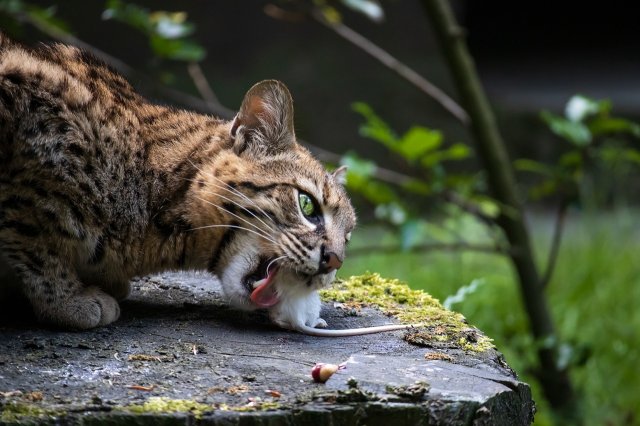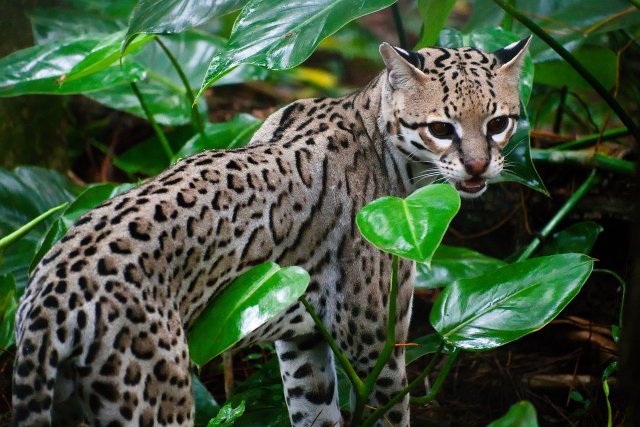What Makes Ocelot Species Unique?
Ocelot Species Unique
Ocelots are fascinating creatures that belong to the wild cat family. They are known for their striking appearance and unique characteristics. In this article, we will explore what makes ocelot species unique and why they are so special.
Physical Appearance
One of the most distinctive features of ocelots is their beautiful coat. They have a pattern of spots and stripes that vary in color, ranging from light yellow to reddish-brown. This unique coat helps them blend into their natural habitat, making them excellent hunters.
Another remarkable physical characteristic of ocelots is their size. They are medium-sized cats, weighing between 20 to 35 pounds. Their body length can range from 2 to 3 feet, with an additional 1 to 2 feet for their tail. This compact size allows them to move swiftly and silently through the dense forests they inhabit.
Habitat and Distribution
Ocelots are native to the Americas and can be found in various habitats, including rainforests, grasslands, and swamps. They are primarily found in Central and South America, with some populations extending into parts of the United States, such as Texas and Arizona.
These cats are highly adaptable and can thrive in different environments. However, they prefer areas with dense vegetation that provides them with cover for hunting and protection. Ocelots are excellent climbers and can be found resting on tree branches during the day.
Diet and Hunting
Ocelots are carnivorous predators, and their diet mainly consists of small to medium-sized mammals, such as rodents, rabbits, and birds. They are skilled hunters and have a diverse range of hunting techniques.
One unique hunting behavior of ocelots is their ability to swim. Unlike many other wild cat species, ocelots are excellent swimmers and can catch fish and other aquatic prey. This adaptability allows them to exploit a wider range of food sources, making them highly successful predators.
Communication and Behavior
Ocelots are solitary animals and are known for their territorial behavior. They mark their territory using scent markings and vocalizations. Males have larger territories that overlap with several female territories, while females have smaller, more exclusive territories.
These cats communicate through various vocalizations, including growls, hisses, and meows. They also use body language, such as tail movements and ear positions, to convey their intentions and emotions.
Conservation Status
Despite their unique characteristics, ocelots face numerous threats to their survival. Habitat loss due to deforestation is one of the primary challenges they face. As human activities continue to encroach upon their natural habitats, ocelots are losing the resources they need to survive.
Illegal hunting and the illegal pet trade also pose significant threats to ocelot populations. Their beautiful coat makes them a target for poachers, who sell their fur on the black market. Additionally, some people capture ocelots as exotic pets, which disrupts their natural behavior and can lead to their decline in the wild.
Conservation Efforts
Several organizations and governments are working to protect ocelots and their habitats. Conservation initiatives focus on preserving and restoring their natural habitats, implementing stricter laws against hunting and the illegal pet trade, and raising awareness about the importance of ocelot conservation.
One successful case study is the Ocelot Conservation Program in Texas, USA. This program aims to protect ocelots by creating wildlife corridors and promoting habitat connectivity. By providing safe passage for ocelots between fragmented habitats, the program helps maintain genetic diversity and ensures the long-term survival of the species.
Summary
Ocelot Species Unique: Ocelots are unique and fascinating creatures with distinct physical characteristics, adaptable behavior, and a vital role in their ecosystems. Their beautiful coat, hunting abilities, and communication methods make them stand out among other wild cat species. However, they face numerous threats to their survival, including habitat loss and illegal hunting. Conservation efforts are crucial to protect these magnificent creatures and ensure their continued existence in the wild.
Read More About the Ocelot From Wikipedia





